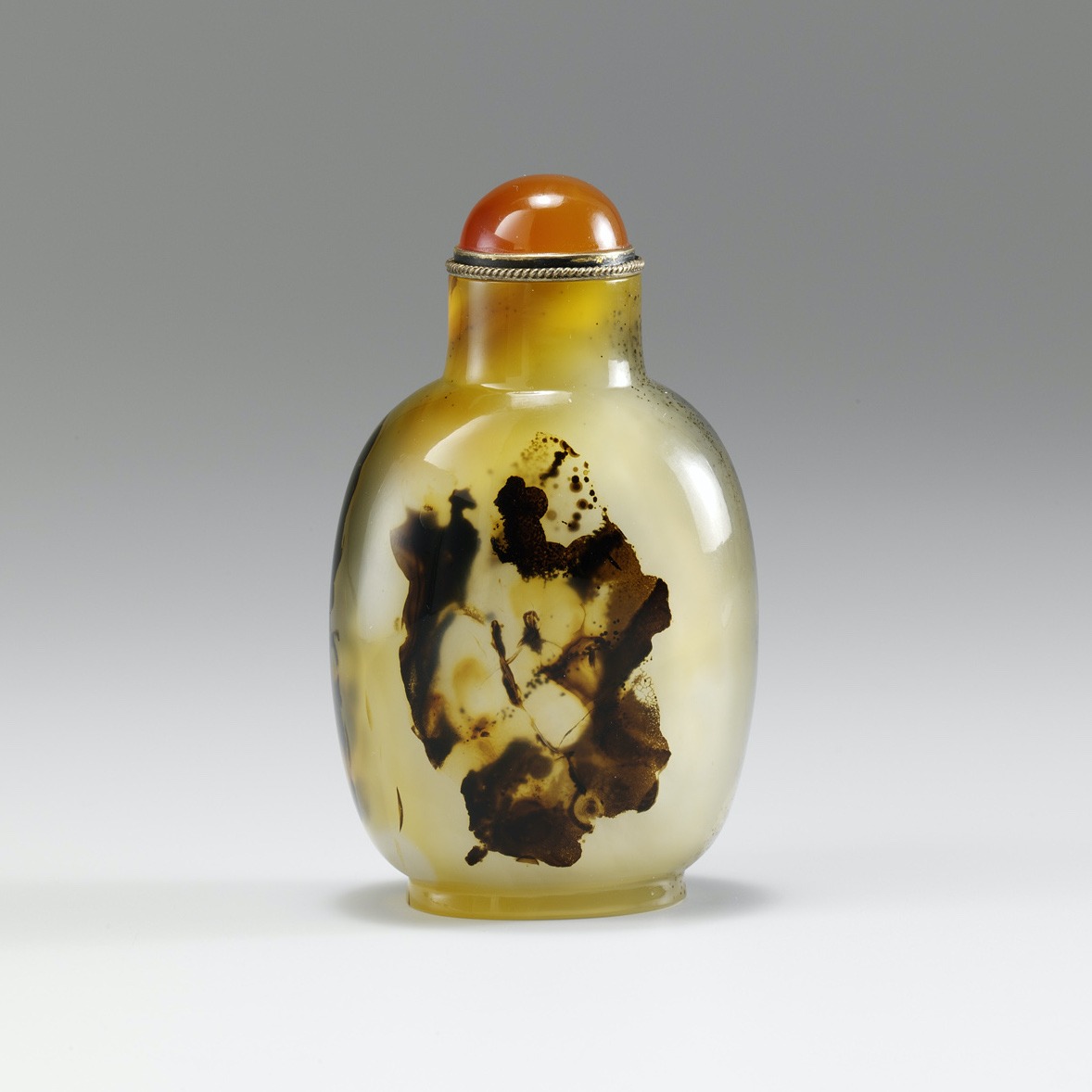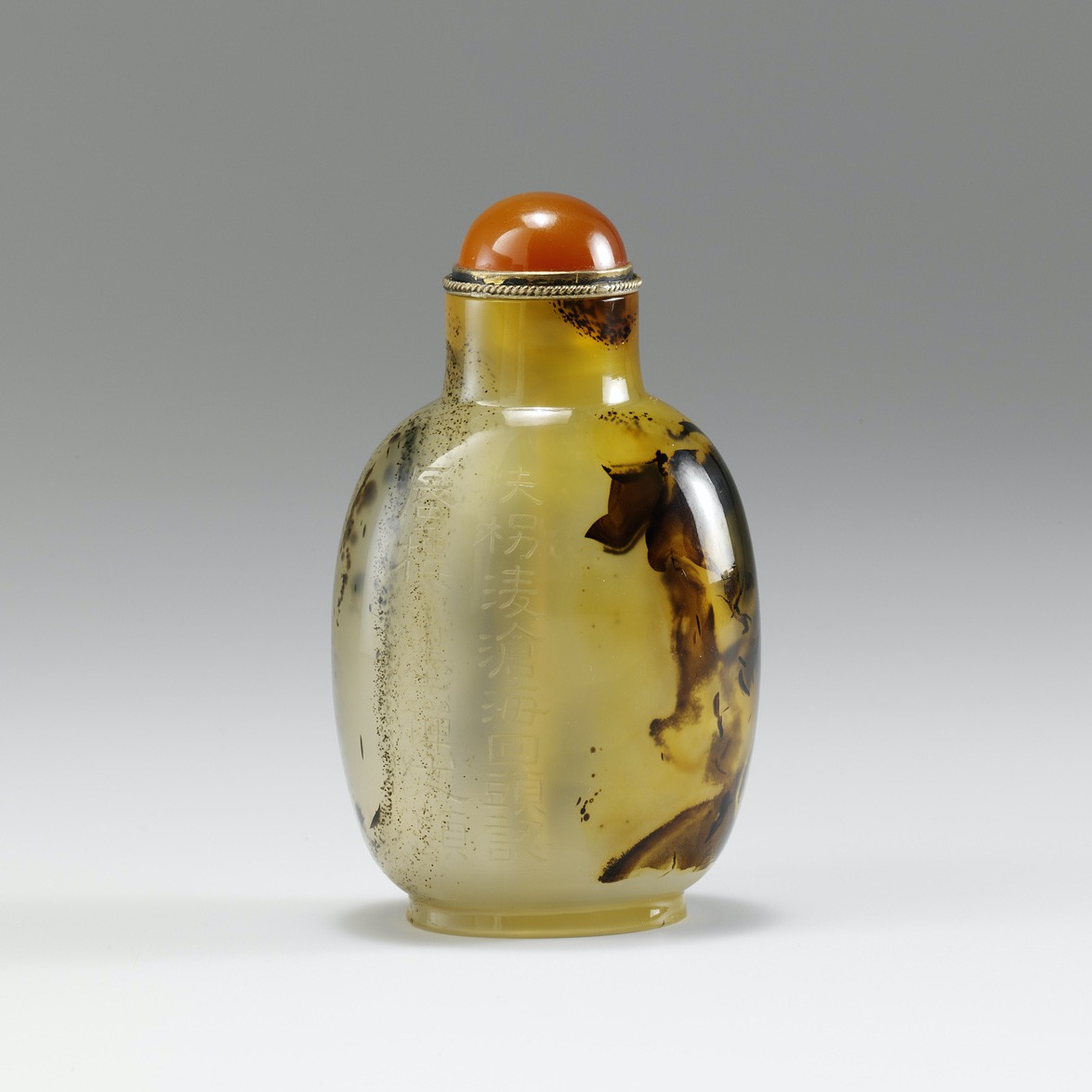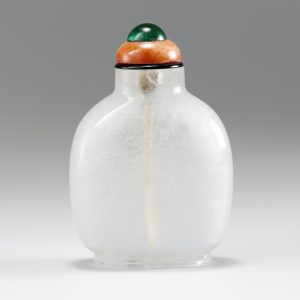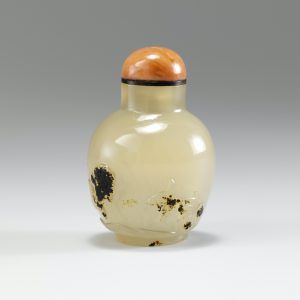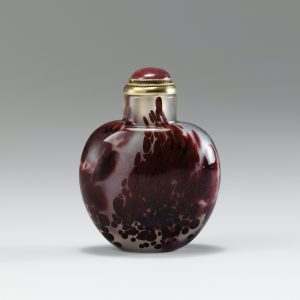Description
Chalcedony; with a wide mouth and supported on a neatly carved foot rim of wide oval section with flattened edges, very well hollowed, suffused with a dark inclusion on one side depicting the Immortal, Li Tiegui, his features clearly defined, clutching his crutch and striding through the waves, the reverse with a complex rock-like formation flanked by an incised inscription in clerical script, Official School.
The inscription reads:
Fu guai, ling cang hai. Hui tou, ren shen lou Mo chan shan ren ti.
‘Leaning on a staff, [I] cross the ocean’s dark waters. Turning [my] head, [1] recognise the mirage.
Inscribed by the Hermit of Mochan
With extraordinary imagination the lapidary has discerned the possibilities of a scene within the piece of material with which he was working and with equal skill he has succeeded in releasing this scene when carving the bottle. No additional editing of the inclusion has been required to show the clearly defined features of a figure striding purposefully through the waves and as the figure is clutching a cane it is natural to assume that the figure is the Immortal, Li Tiegui. The inscription incised on the reverse refers to the Hermit of Mo Chan, a character who does not appear to be recorded. This group of chalcedony snuff bottles, those with little or no additional carved decoration, but simply suffused with natural colours in which patterns or themes can be discerned is one of the most remarkable in the entire pantheon of hardstone snuff bottles. Moss, Graham and Ka Bo T sang analyse and discuss the importance of this group of bottles to the Chinese aesthetic in an extended tour of the finest group to be assembled in modern times by the Blochs in Treasury 2, nos. 260-280. They have penned the title of ‘Ink-play agates’ to the group, in a reference to the style of painting in which random splashes of ink are cast across a sheet of paper and left to be interpreted by the viewer in whatever manner his imagination directs.
The authors note that this pastime of the literati probably began with the appreciation of rocks, which were admired for their natural possibilities long before the idea became transferred to ink and paper and they correctly emphasise this close aesthetic connection between the arts of the snuff bottle and of painting.
Large numbers of this type of snuff bottle were created, demonstrating the importance attached by the literati to these links and the sophistication of the idea points to these bottles having a close connection to court life.
The particular bottle is one of the masterpieces of the of the entire genre, both in the completeness of the scene without the need for any additional editing and in the sense of movement with which is it invested. For two egg dazzling examen see Treasury 2, nos. 270 and 279.
